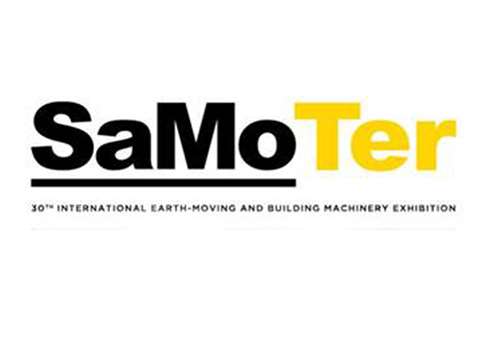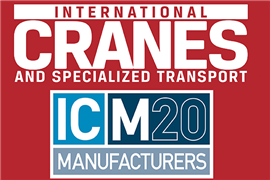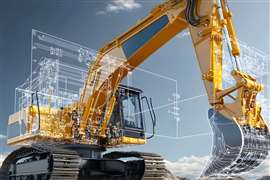Earthmoving machines up 16% in Italy
15 May 2018

Growth of 16% for sales of earthmoving machinery in Italy during 2017 is being reported, and the recovery over the next three years is being predicted to be driven by the replacement of vehicle fleets and new investments in the building and construction sector.
Also, the forecasts from the latest Samoter Outlook report, developed by the Veronafiere trade show, suggest that 1 million earthmoving machines will be purchased in 2020 all over the world, with North America and China increasingly seen as being in a neck-and-neck battle for top place.
The report said that the market had restarted following years of recession. After closing 2017 with a record of 825,000 vehicles sold – an increase of 23% compared to the previous year –the sector is looking to consolidate this recovery over the next three years through steady growth. The market is expected to improve from an increase of 5.3% in 2018 to 7.6% in 2020.
The Samoter Outlook report ‒ developed in collaboration with research company Prometeia and Unacea (the association of Italian construction machinery manufacturers) ‒ was presented during the fourth edition of Samoter Day, an update and training event for operators. It was organised as part of the run-up to the next Samoter, which is scheduled for 21 to 25 March, 2020.
Samoter said that among mature economies, North America was expected to see 9% more orders in 2020, backed up by investments in buildings increasing by 2.5% per year on average.
In Europe, thanks to average growth in demand for construction equipment of 5% between 2018 and 2020, a return to 2007 pre-crisis levels is expected, with a total of 205,000 units.
Japan is expected to slow down somewhat, posting a rise of only 1% in sales between 2019 and 2020.
The outlook for emerging markets sees construction accelerating once again in Latin America, with relative demand for construction machinery estimated at a 17% increase between 2019 and 2020.

The report said that China ‒ today the second world market with a 21% market share ‒ was expected to stabilise at around 180,000 units sold, for an average growth rate of 2 to 3%. This effectively brings it on a par with North America.
Central and Eastern Europe will post an absolute record of 44,000 machines in 2020 – a rise of 11% – half of which will be bought by Russia, said Samoter. Good growth of 12% is also assumed for India with 50,000 units in 2020.
The recovery will be boosted as the positive cycle in the construction sector becomes even stronger, said the report. It said global investments in 2017 reached €6,912 billion, up 3.1% over 2016. This period of expansion will continue until 2020, at an average of more than 3%.
Italian market
For the Italian market, the report said that with 13,700 earthmoving machinery units sold, up by 16% over 2016, last year had been the fourth year of consecutive growth after the collapse of 80% between 2008 and 2013.
Double-digit development is expected to continue, with 15,600 machines sold in 2018 (up 14.3%) and then 19,800 in 2020 (a rise of 12.6%). These figures confirm Italy as the fourth biggest market in Europe, even though this total has to be compared to 30,000 units sold in 2007.
Favourable growth in 2017 will not only be driven by replacements of vehicle fleets, said Samoter, but also by investment trends in the construction sector. This is especially so in the residential field, with an increase of 1.9%. Growth in the number of new building permits issued indicates a gradual resumption for new homes, although expenditure for maintenance and renovation of existing buildings is still fundamental, it said.
It added that there was also a distinct recovery for public works, driven by growth in tenders (up 33.1% in value), in the wake of uncertainties associated with the new Procurement Code that affected 2016.
Between 2018 and 2020, Italy should see a recovery in the construction sector that will tend to consolidate at an average annual growth rate of around 1.5%, said Samoter.
During this period, the main impetus will take the shape of €14.4 billion of public investments (infrastructure, transport, school and health sector buildings, and hydrogeological instability projects); €6 billion as part of the Stability Law for the reconstruction of areas hit by earthquakes; and €2 billion for security of building heritage.
Samoter said this would also be flanked by the extension of tax incentives for restructuring and energy re-qualification, the eco-bonus for condominiums, and the earthquake bonus. It was said that there would be more room for manoeuvre for investments by local councils in school buildings and sports facilities.
As regards major public works, RFI ‒ the administrator of the national railway infrastructure ‒ was expected to spend €13.3 billion between 2017 and 2021, while ANAS (public roads) will implement resources totalling €21 billion through to 2020.
STAY CONNECTED


Receive the information you need when you need it through our world-leading magazines, newsletters and daily briefings.
CONNECT WITH THE TEAM










